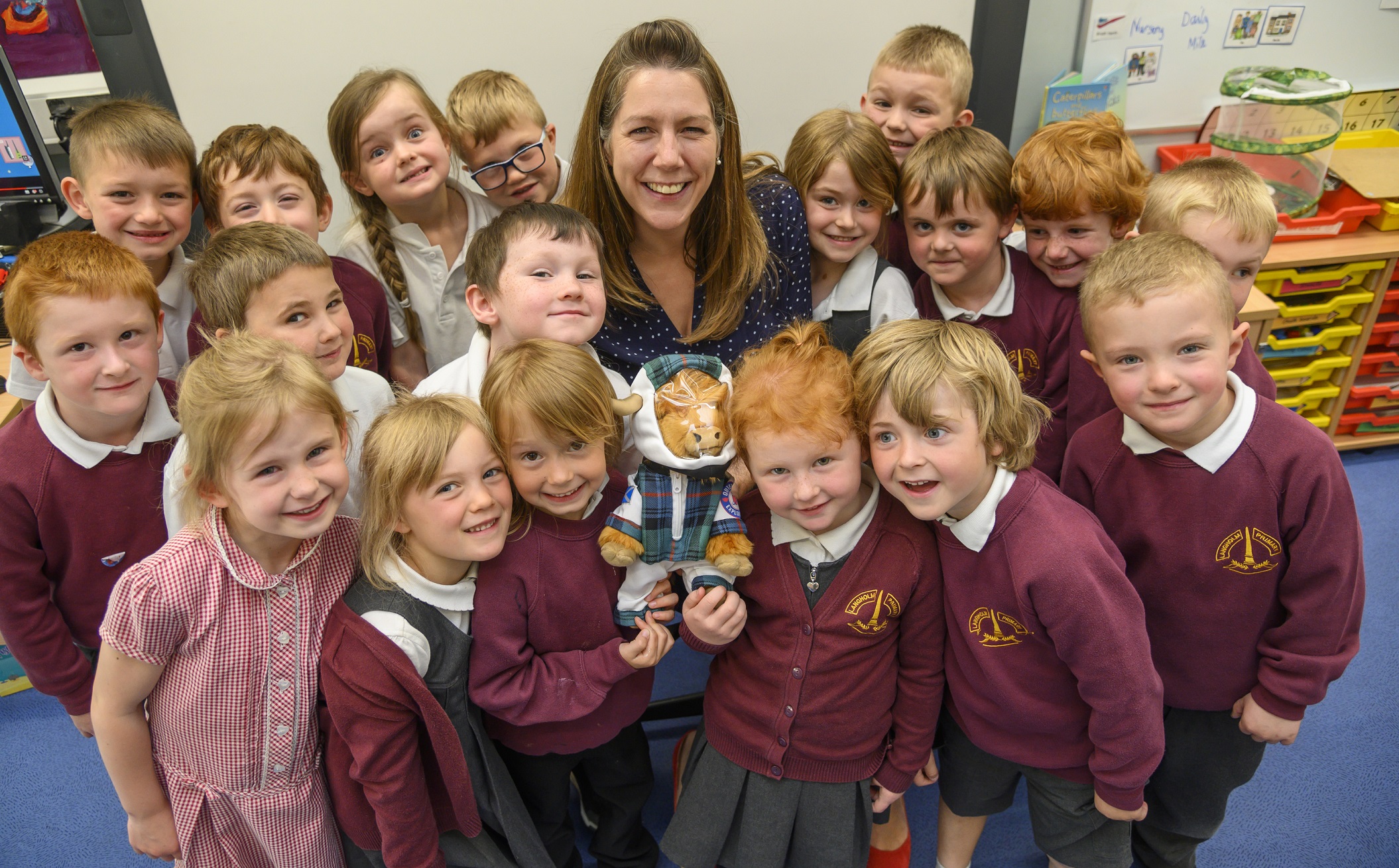
An out of this world celebration for Scotland
The world’s first-ever Highland Coosmonaut has been launched into ‘near space’ as part of a new tourism campaign, to celebrate Scotland’s connection to the first moonwalk.
Primary school-aged children across Scotland are being invited by the national tourism organisation to name the heroic cuddly toy Highland coo which will be sent almost 40,000 metres into the stratosphere wearing a Clan Armstrong tartan spacesuit.
The Scotland is Out of this World campaign will mark the 50th anniversary of the Apollo 11 mission and US astronaut Neil Armstrong’s historic walk on the lunar surface as well as the 50th anniversary of VisitScotland.
Ohio-born Neil Armstrong was said to be proud of his Scottish heritage. The ancestral home of Clan Armstrong is Langholm in Dumfries and Galloway and in 1972 he become the town’s first and only Freeman.
On accepting the honour, Armstrong told the gathered audience: ‘It’s said that the most difficult place to be recognised is in one’s own home town. And I consider this, now, my home town.’
Scotland is Out of this World is among a series of activities created this year to mark VisitScotland’s 50th anniversary. The Development of Tourism Act came into force in 1969 – the same year as the Moon landing – and an official Scottish Tourist Board was established with government funding.
The tourism campaign was announced at Langholm Primary School. Over the next four weeks, the public can track the Highland Coosmonaut’s training regime in a series of films on social media using the hashtag #Coosmonaut. The campaign will explore Scotland’s links to space exploration, innovation and astronomy and a visitor trail focusing on those links is also planned.
VisitScotland has teamed up with Sent Into Space to send the toy Highland cow into the sky attached to a weather balloon – with footage of its journey released in time for the Moon landing’s anniversary.
The Coosmonaut’s spacesuit was specially made by Vintage Bunting in the Scottish Borders, using Clan Armstrong tartan supplied by Lochcarron of Scotland.
Neil Armstrong, Buzz Aldrin and Michael Collins formed the three-man NASA mission which set off on 16 July 1969, to land on the surface of the Moon. On 20 July 1969, Armstrong and Aldrin touched down on the lunar surface.
- It wasn’t just Neil Armstrong – read the story of another Scotsman on the moon HERE
Malcolm Roughead, chief executive of VisitScotland, said: ‘For 50 years VisitScotland has helped position Scotland as a must-visit destination to audiences across the world but our latest campaign could be described as truly out of this world.
‘The impact of tourism goes far beyond the holiday experience. It is vital to the Scottish economy, reaching every corner of the country, creating jobs, income and social change.
‘The Scotland is Out of this World campaign is an opportunity to delve into the past and celebrate our country’s ancestral links to one of the greatest moments in history, as well as explore the innovations and attractions that engage with audiences fascinated with the night sky.’
Karen Vidler, Langholm Primary School acting depute headteacher, said: ‘We are absolutely delighted to support this exciting campaign from VisitScotland that will honour the town’s famous links to Neil Armstrong during this special anniversary year.
‘The competition to name the Highland cosmonaut is a fantastic way to engage children in the campaign and ignite an interest in our history and ancestors. I know there is lots of excitement amongst the children about what the cuddly space adventurer will be called and we look forward to following its adventures in the coming weeks.’

Paula Ward, Regional Leadership Director at VisitScotland, with Langholm Primary School pupils and the Highland Coosmonaut (Photo: Phil Wilkinson)
Ian Martin, Project Manager at Gilnockie Tower, said: ‘Gilnockie Tower, the ancestral home of Clan Armstrong, was opened last year and has attracted visitors from across the world interested in tracing their family roots and history. As well as the 50th anniversary of the moon landings, we are also celebrating the 500th anniversary of the rise of Gilnockie Tower – a truly special year for Langholm and our celebrated links to the most famous Armstrong of them all – Neil Armstrong.’
Travel guide publisher, Lonely Planet, has identified dark skies as a tourism trend for 2019. VisitScotland’s Insight team has created a research paper examining the opportunities for tourism businesses in Scotland to engage with the trend.
Galloway Forest Park in Dumfries and Galloway and Tomintoul and Glenlivet in Cairngorms National Park are two of only 15 International Dark Sky Parks in Europe. It means they are some of the best places on Earth to study the sky at night. The Isle of Coll was also Europe’s first ‘Dark Sky Island’ and Moffat, in Dumfries and Galloway, was its first ‘Dark Sky Town’.
The International Dark-Sky Association which certifies International Dark Sky Parks defines the term as ‘a land possessing an exceptional or distinguished quality of starry nights and a nocturnal environment that is specifically protected for its scientific, natural, educational, cultural heritage, and/or public enjoyment’.
The Name the Highland Coosmonaut competition will run until 11.59pm on Sunday, 16 June. For more on the campaign and to enter the competition, go to visitscotland.com/out-of-this-world
To download the Insight paper Dark Skies & Astro-Tourism go to https://www.visitscotland.org/research-insights/about-our-visitors/interests-activities/outdoor-activities
TAGS

